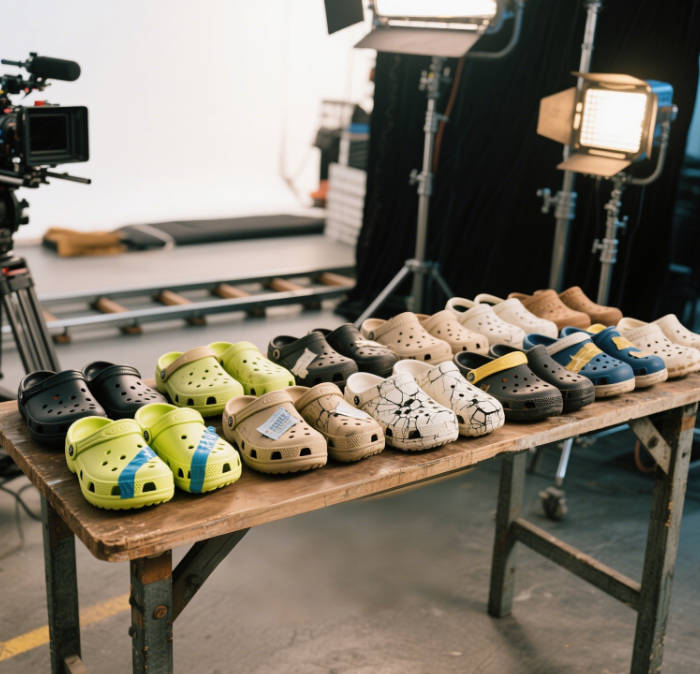When the film crew first received the script, no one expected a pair of shoes to become the star of a scene. But as it turned out, the story hinged on a close-up: the protagonist’s weary, well-traveled feet stepping out of a long journey—and into his past. The director insisted on a pair of shoes that could “tell a story on their own,” and not just any shoes—clogs, the kind with holes in them, worn and expressive.

The props department scrambled. They collected every pair of holey clogs they could find. A dozen options, from brand new to barely holding together, lined up neatly on a folding table near the camera.
The first pair looked pristine—bright white, no scuff marks, barely bent. The assistant director raised an eyebrow.
“Too new. It looks like the character bought them yesterday. Where’s the history?”
The next few were heavily used, almost falling apart, with soles that peeled and heels that sagged.
“Too far,” said the director with a sigh. “This guy’s poor, not barefoot. We need something that looks lived-in, not abandoned.”
That’s when someone noticed Jack, the quiet crew member who managed the cables and light stands. He was leaning against a grip truck, sipping coffee. On his feet was a pair of clogs that looked exactly right—worn but not destroyed, soft around the edges, the color faded just enough. One hole had been partially melted by a stray firework from a music video shoot. Another still had a smudge of paint from last year’s indie film.
The wardrobe supervisor pointed. “What about those?”
Jack looked down. “These? I’ve had them five years.”
The director rushed over, eyes wide with excitement. “Can they walk on gravel? Can they step into a muddy puddle? Can we shoot a close-up?”
Jack shrugged. “They’ve done worse.”
Suddenly, Jack’s shoes became stars.
They were filmed stepping onto dusty train tracks, crunching gravel with just enough dramatic tension. They waded through a puddle of fake oil, catching the light in the perfect way. Every crease in the sole, every frayed edge told the story the script demanded: a man who had seen the world, walked through hardship, and still kept going.
The costume designer asked if Jack had ever considered retiring them.
He smiled. “Not until they fall apart. Each mark’s got a memory. This one—” he pointed at the toe, “from when a ladder dropped on my foot during a music festival setup. That streak? Spray paint from a protest scene. And the melted hole? Fourth of July. Too close to the fireworks.”
By the end of the day, everyone on set had a new respect for Jack’s clogs. They weren’t just shoes—they were storytellers. No one else’s pair came close to that kind of authenticity.
The scene made it into the final cut—just three seconds of screen time, but enough to give the opening a grounded, human feel. Viewers wouldn’t know whose feet they were watching, but they’d feel the weight of a journey.
And Jack? He got a credit in the film under a new title: “Footwear Consultant (Uncredited Star)”. He still wore those clogs every day, now with a tiny piece of gaffer tape on one strap and a little more pride in his step.
After all, not every pair of shoes gets to be a stunt double.